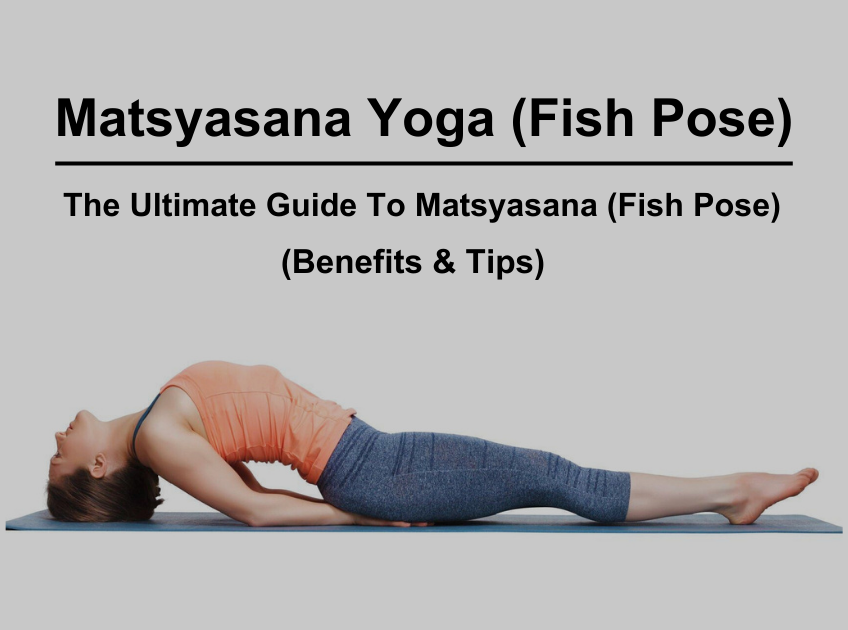
Matsyasana (Fish Pose) is an asana that emphasizes flexibility, expands the chest, and serves as a heart-opening posture. It is an easy yoga stance for beginners that has several advantages for the practitioner.
Because Matsyasana resembled a fish swimming in water, it was given the fish's name. It is derived from the Sanskrit terms "matsya" (fish) and "asana" (position or posture).
This pose should be done in the morning or evening, ideally on an empty stomach.
Before starting this pose, it is imperative to warm up the body, especially the spine and hip flexors.
Practitioners who have spinal problems or injuries should adjust the pose or stay away from it completely.
Women should refrain from doing this pose if they are pregnant or going through their menstrual cycle.
1. Lie on your back with your feet on the floor and knees bent
2. Cross your legs in padmasana (lotus pose) and relax the whole body
3. Now support your body with elbows, and crossed legs and uplift your chest, engaging your shoulder blades.
4. Let the crown of the head touch the floor while maintaining a heart-opening stretch.
5. Grip both the big toes with your fingers tightly, keeping your legs extended.
6. Lift the thighs and knees off the floor and forcefully press the toes into the ground to deepen the stretch.
7. Hold this pose for five to ten slow, deep breaths. Then, slowly release your hold, lift your pelvis slightly, and return to the starting position to complete the process of performing this pose.
_1702110128.jpg)
1. Relieves the tension in the shoulders and neck, improving posture by opening and stretching the chest, shoulders, and throat.
2. Breathing capacity increases. Maximizes the oxygen intake
3. Abdominal organs are activated
4. Facilitates better digestion and eases constipation.
5. Menstrual pain is reduced
6. Anxiety, depression, and stress all get gone off
7. Give flexibility to the spine and better posture
Asthma
Fatty liver or other liver disorders
If you have undergone any surgery in the past
If you are pregnant, especially until the first trimester
If you have low or high blood pressure
If you have sleeplessness or migraine headaches.
Matsyasana addresses the chest, shoulders, and throat. It elongates the neck muscles, rib cage muscles, and chest-shoulder muscles, and can be supported with a yoga block if needed for assistance. The spinal muscles, among other back muscles, are also worked and strengthened in this stance.
After becoming comfortable with this bending yoga posture, practitioners can progressively advance to increasingly difficult positions, ensuring proper counter poses to maintain balance. Following this pose, one can practice the following advanced poses
5. Bow Pose with an upward face, or Urdhva Dhanurasana
If you are a beginner in yoga and want to practice yoga on regular basis but don’t know how to start properly and the correct way to perform yoga asana, the yoga for beginner’s course is the perfect option for you.
You can join the 100 hour yoga teacher training course from one of the best yoga teacher training in rishikesh. If you are interested in healing and meditation you can check out the amazing sound healing course in Rishikesh.